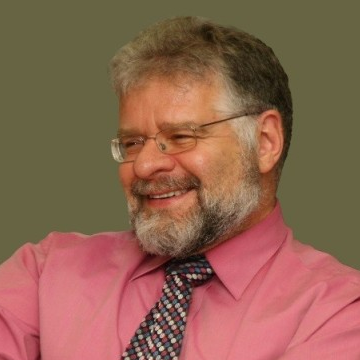Topological Algebra
A special issue of Axioms (ISSN 2075-1680). This special issue belongs to the section "Geometry and Topology".
Deadline for manuscript submissions: closed (31 July 2021) | Viewed by 7994
Special Issue Editor
2. Department of Mathematical and Physical Sciences, La Trobe University, Melbourne, VIC 3086, Australia
Interests: topological groups; especially locally compact groups; pro-Lie groups; topological algebra; topological vector spaces; Banach spaces; topology; group theory; functional analysis; universal algebra; transcendental number theory; numerical geometry; history of mathematics; information technology security; health informatics; international education; university education; online education; social media in the teaching of mathematics; stock market prediction; managing scholarly journals
Special Issues, Collections and Topics in MDPI journals
Special Issue Information
Dear Colleagues,
This Special Issue is devoted to the broad area of Topological Algebra—objects which have an algebraic structure and a topological structure and an interplay between the two structures. Important examples include compact semigroups, locally compact groups, Lie groups, topological groups, topological vector spaces, Banach spaces, and Banach algebras. Each of these has been studied for over half a century and has developed a separate character from the others. In 1900, David Hilbert presented a seminal address to the International Congress of Mathematicians, in which he formulated 23 problems that influenced a vast amount of research in the 20th century. The fifth of these problems, Hilbert 5, asked whether every locally Euclidean topological group admits a Lie group structure, and this motivated an enormous effort in locally compact groups. It culminated in the works of Gleason, Iwasawa, Montgomery, Yamabe, and Zippin, yielding a positive answer to Hilbert 5 and important structure theory of locally compact groups. Later, Jean Dieudonné quipped that Lie groups had moved to the centre of mathematics and that one cannot undertake anything without them. Recently, there has been much interest in infinite-dimensional Lie groups, including significant publications by Glöckner and Neeb, and two books by Hofmann and Morris, which demonstrated the power of Lie theory in describing the structure of compact groups and (almost) connected pro-Lie groups.
Over the years, the Moscow school led by Arhangel’skii produced many beautiful results on free topological groups and non-locally compact groups in general. The book “Topological Groups and Related Structures” by Arhangel’skii and Tkachenko contains many results about such groups. Advances in profinite group theory are described in books by Wilson and by Ribes and Zaleskii and on locally compact totally disconnected groups in the papers of Willis and collaborators. Central to the study of functional analysis is Banach space theory, the study of which was begun in the 1920s by Stefan Banach. There is now a vast literature on Banach spaces, even on the so-called classical Banach spaces. Many open questions exist to this day, including about the geometry of Banach spaces. The first book on Topological Vector Spaces was by Kelley and Namioka, which over the years was followed by many others, including those by Schaefer, Robertson and Robertson, Bourbaki, Banaszczyk, Koethe, and Bogachev and Smolyanov. The study of topological semigroups was brought to life by A.D. Wallace, who is the father of the theory of compact semigroups. The most important book on these is by Hofmann and Mostert in the 1960s. Many of the researchers in this general area have links to Wallace. The notion of a Banach algebra has its roots in work by Nagumo and Yosida on metric rings and Mazur on division algebras with a norm in the 1930s. Gelfand introduced the notion of a commutative Banach algebra in 1939. In 1956, Naimark’s book on normed rings (as Banach algebras were known in the Soviet Union) was instrumental in Banach algebras, becoming established as a separate and significant area of study.
In this Special Issue on Topological Algebra, we seek to address topics which fall into this broad category. Original articles reporting recent progress and survey articles are sought. Authors are encouraged to include interesting open questions.
Prof. Dr. Sidney A. Morris
Guest Editor
Manuscript Submission Information
Manuscripts should be submitted online at www.mdpi.com by registering and logging in to this website. Once you are registered, click here to go to the submission form. Manuscripts can be submitted until the deadline. All submissions that pass pre-check are peer-reviewed. Accepted papers will be published continuously in the journal (as soon as accepted) and will be listed together on the special issue website. Research articles, review articles as well as short communications are invited. For planned papers, a title and short abstract (about 100 words) can be sent to the Editorial Office for announcement on this website.
Submitted manuscripts should not have been published previously, nor be under consideration for publication elsewhere (except conference proceedings papers). All manuscripts are thoroughly refereed through a single-blind peer-review process. A guide for authors and other relevant information for submission of manuscripts is available on the Instructions for Authors page. Axioms is an international peer-reviewed open access monthly journal published by MDPI.
Please visit the Instructions for Authors page before submitting a manuscript. The Article Processing Charge (APC) for publication in this open access journal is 2400 CHF (Swiss Francs). Submitted papers should be well formatted and use good English. Authors may use MDPI's English editing service prior to publication or during author revisions.
Keywords
- Topological algebra
- Topological semigroup
- Topological group
- Lie group
- Lie algebra
- Topological vector space
- Banach space
- Hilbert space
- Banach algebra
- C*-algebra
Related Special Issue
- Topological Groups in Axioms (38 articles)




